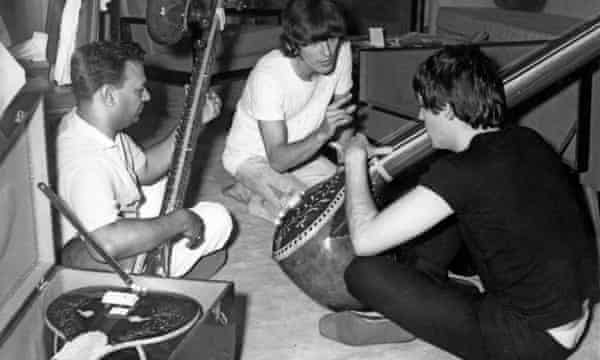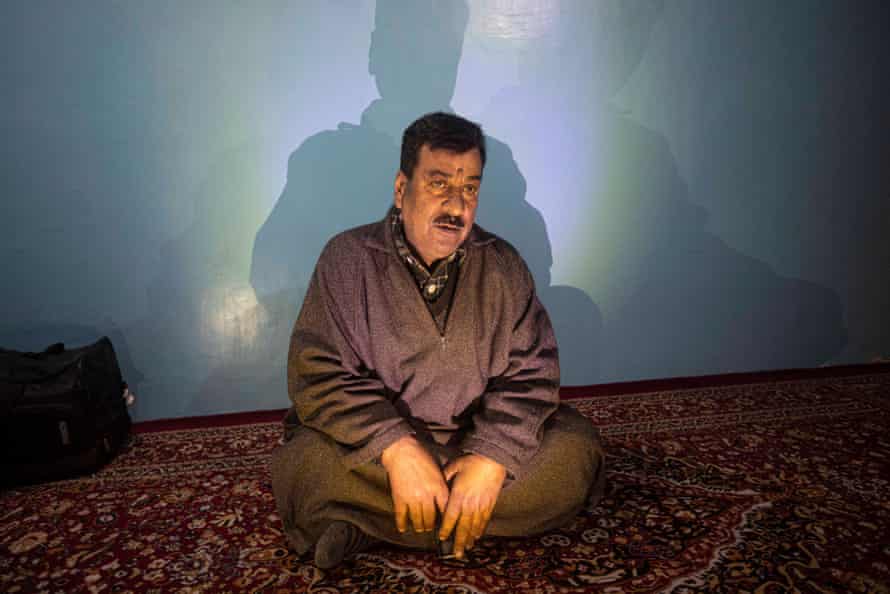Ghulam Nabi Butt may be 90 years old, but he has never forgotten the three days that George Harrison came to stay on his houseboat in October 1966.
It was here, on one of Butt’s first historic Clermont houseboats moored on the northern bank of Dal Lake in Srinagar, Kashmir, that the Beatles lead guitarist met the Indian musician and composer Ravi Shankar and was taught to play the sitar – marking the beginning of an musical collaboration that would last decades.
Butt had no idea of Harrison and Shankar’s fame at the time, but according to the houseboat owner’s son, “later realised the importance of the visit”. Harrison’s guestbook message still hangs on the wall. “To Mr Butt, with thanks for a very peaceful stay.”

Yet, despite all the history surrounding Butt’s Clermont fleet, they, like the hundreds of houseboats stationed along Srinagar’s lakes and river’s banks, are facing an existential threat.
In an attempt to save the ecology of Kashmir’s waterbodies such as Dal Lake, which is shrinking owing to pollution and climate change, authorities have begun strictly enforcing a decade-old ban on the reconstruction and repair of Kashmir’s houseboats that occupy – and pollute – the lakes and rivers.
With owners banned from fixing them, Kashmir’s lakes are slowly turning into graveyards for the sinking boats.

“We had eight houseboats and some decayed over the decades and sank. Now there are four left,” said Butt, sitting in the opulent surroundings of one of his remaining boats, decorated with rich pile carpets, an intricate woodwork interior and century-old furniture. Michael Palin once stayed here too, he added. But now no guests come at all, owing to India’s military crackdown on Kashmir and the coronavirus pandemic.
Houseboats began to be built on Kashmir’s Dal and Nagin lakes in the late 19th century as a place for Europeans, banned by the king of Kashmir from owning land in the region, to visit and live in. More than a century later, the number of houseboats had increased to more than 3,000 as they featured in Bollywood films and became a mainstay of tourism in the Himalayan state.
However, in the 1980s, before the now three-decade long insurgency enveloped Kashmir valley, a ban on new houseboats being built on the waterways was introduced because of pollution concerns.
Then, after the government took legal custody of Dal Lake in 2009, a directive was issued to reduce houseboat numbers. Authorities were told not to renew licences and all construction in the vicinity of the lake was banned, rendering repairs impossible except with special permission, acquired through a lengthy legal process that is now rarely successful.
Over the past year, boat owners said, the repair ban had been particularly strictly enforced. This was confirmed by a senior government official who said the repair requests had to go through a special committee, which “practically never grants permission. In a year, I have not seen any permission given. Reconstruction of houseboats is not allowed.”
Nazir Ahmad Kawdari, 53, the 11th and likely last generation in his family of houseboat builders, said the ban had proved devastating.
“Our family has been constructing different types of boat for the last 700 years. Only few people are now alive who have this craft and in 10 years there may be no one who knows how to make these boats,” said Kawdari, adding that at least 400 houseboats required urgent repair or faced the risk of sinking.

Abdul Hameed Wangnoo, the president of Houseboat Owners Association, said nearly 500 houseboats had been lost in the last decade.
“There were 1,500 10 years ago, now there are 950. More will sink if the repair and renovation is not allowed. All houseboats require maintenance on yearly basis – it is a fragile wooden infrastructure.”
Wangnoo, whose family has owned houseboats since 1886, said the government’s apathetic approach towards the houseboats, as well as the policies it has introduced, had done more damage than good to the lake.
“The development project came into existence to save the lake, but they have murdered the lake,” he said. “They have built roads around the lake and blocked the supply of water from surrounding springs. The lake has now become a septic tank.”
However, according to a special committee of experts established by the government to monitor the declining conditions of the Dal, limiting the presence of houseboats, which do not have proper plumbing and pump sewage straight into the water, is essential for the future of the lake.
In a court directive from 2018, the committee said it was “convinced that if situation continued with business as usual, the lake will not survive beyond 30 years maximum”, adding that houseboat “occupation cannot continue at all if the Dal is to be saved”.
The absence of foreign tourists for more than 18 months has also sounded the death knell for many of the houseboats as they were the owners’ main source of revenue. In August 2019, Delhi stripped Kashmir of its special semi-autonomous status after seven decades and Kashmir was placed under a heavily militarised crackdown, with internet cut for more than six months. Tourism vanished in the aftermath. Then in March, the pandemic hit and India closed its borders to foreign tourists, a ban that still continues.
Tariq Ahmad Patloo, the owner of Sea Palace in Dal Lake, religiously follows the daily routine of bucketing out water that now seeps through cracks of his the hull. “It will cost me 100,000 rupees [£990] to fix, but I cannot afford this amount at this time because there has been no work for the last two years,” he said. “If I miss draining the water for two or three days, the houseboat will sink.”
Sami Handoo, 35, was among those who had recently witnessed her livelihood descend to the bottom of the lake. Her family’s 70s-era houseboat, which they had been struggling to maintain, sank after a spell of heavy snowfall in the first week of January.
“It was snowing for four days and water had suddenly entered the boat and it sank within minutes,” she said. “We were not even able to fetch our possessions.”
This content first appear on the guardian
